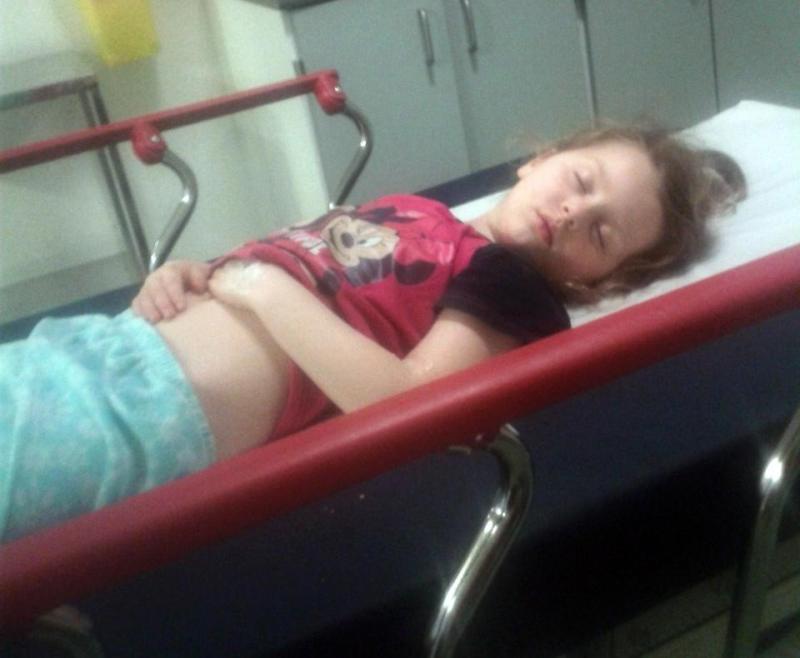 Five-year-old Karis Cochrane suffered from a ruptured appendix which doctors failed to identify in her earlier visits. Photo credit: Daily Record/Mirrorpix
Five-year-old Karis Cochrane suffered from a ruptured appendix which doctors failed to identify in her earlier visits. Photo credit: Daily Record/MirrorpixStreptococcus anginosus, aminoglycoside-susceptible Gram-negative bacilli and anaerobes remain the most common bacteria in previously healthy children presenting with complicated appendicitis requiring surgical drainage, reports a study.
A total of 425 children with primary acute appendicitis were included, among whom 158 (37 percent) had complicated appendicitis at presentation. Of the 133 patients who underwent a surgical or interventional radiologic intervention, 53 (40 percent) had bacterial culture.
Those with peritoneal cultures had a higher likelihood of having longer symptom duration prior to admission (3 [interquartile rage, 2–5] vs 2 [interquartile range, 1–2] days; p<0.001) and purulent peritonitis (47 percent [23/53] vs 13 percent [10/80]; p<0.001).
The most common pathogens isolated were anaerobes (81 percent), Escherichia coli (74 percent) and S. anginosus group (62 percent). Of the isolated bacteria, only 4 percent showed resistance to empiric therapy.
Twenty-three (17 percent) patients had postoperative infectious complications. Such complications were associated with more severe disease and higher C-reactive protein values (303 vs 83 mg/L; p=0.03) at presentation but not with the presence of a resistant pathogen or the choice of antimicrobial agents.
“In an attempt to reduce extended-spectrum cephalosporin use, these data were useful in supporting the use of metronidazole with ampicillin and an aminoglycoside, rather than third-generation cephalosporins,” the investigators said.
This retrospective cohort study was conducted from 1 February 2017 to 31 October 2018 in children who underwent appendectomy or interventional radiologic drainage for primary complicated appendicitis.
The proportion of patients who had a pathogen isolated from peritoneal fluid culture that was not susceptible to the recommended empiric therapy was the primary outcome. Total duration of antimicrobial therapy and the proportion of patients with a postoperative infectious complication within 30 days after intervention were the secondary outcomes.